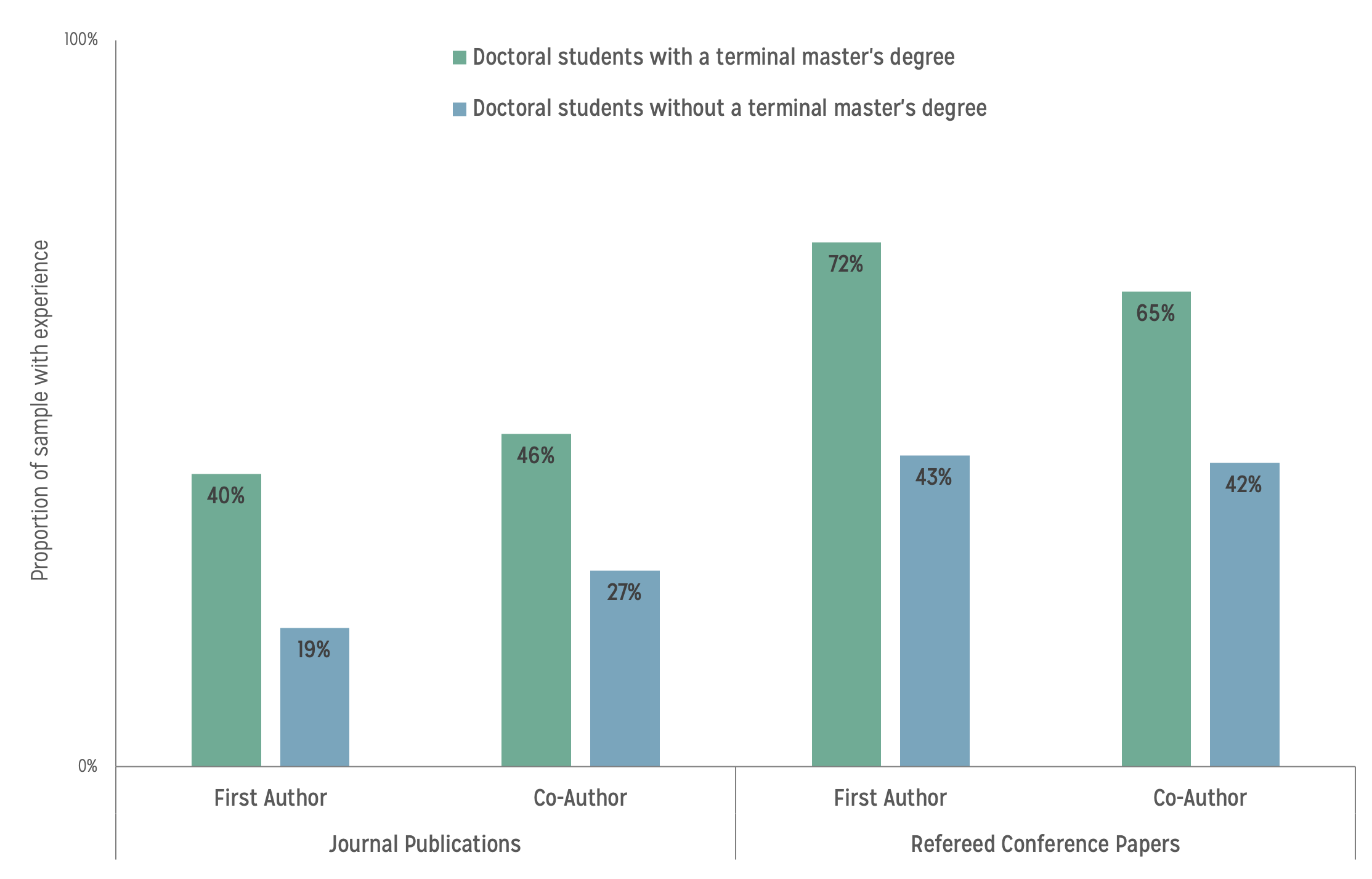Does Having a Terminal Master’s Degree Prior to a Ph.D. Boost Publication Rate?

When undergraduate students earn their degree, they have a decision to make between entering the workforce or pursing graduate school. For those taking the graduate school route, they typically consider a terminal master’s degree program or doctoral program. In many cases, they first pursue a terminal master’s degree, then apply to a doctoral program. Does having a terminal master’s degree make a difference for doctoral students’ experiences and outcomes in their degree program? Because one of the major career pathways of Ph.D. recipients is academia, CERP sought to understand whether doctoral students with a terminal master’s degree show differences in measures that are often used as determinants of success in the academy, such as publication production.
Results show that among doctoral students, those with a terminal master’s degree are twice as likely to have first author journal publications than those without a terminal master’s degree. They are also approximately 1.5 times more likely to have first author refereed conference papers, and to have co-authored journal publications and conference papers. Note that to control for the possibility that students with a terminal master’s degree may transfer credits or matriculate further along in their program than those who enter directly from their bachelor’s degree, the sample in our analysis was limited to students who have the same graduation date (2018). Please see the Notes section for more details about our sample, measures, and results.
It is important to note that these data do not control for students’ future career intentions. It is possible that the students with a terminal master’s degree in our sample have a stronger interest to pursue a academic career. There are also potential differences in our sample’s academic institutions, wherein some departments may encourage publication production more strongly than other departments. Nevertheless, these findings indicate that students who earn a terminal master’s degree prior to their doctoral studies may be at an advantage in producing publications.
Notes:
The survey data used in this chart were collected during the fall 2017 by CERP via the Data Buddies Project. The sample includes 628 doctoral students who indicated in the survey they expect to graduate from their program in 2018.
Independent variable: Doctoral students indicated whether they completed a terminal master’s degree program prior to entering their current degree program using a binary response “yes” or “no.” Two-hundred and twenty-one students indicated they had completed a terminal master’s degree and n = 407 did not complete a terminal master’s degree.
Dependent variables: Survey respondents were asked whether they had any of the following four experiences: first author journal publications, co-author journal publications (not first author), first author refereed conference papers, and co-author refereed conference papers (not first author). Survey respondents could indicate either yes or no.
A chi-square test of independence was calculated to compare the proportion of doctoral students with and without terminal master’s degrees who had produced first or co-authored publications. Significant interactions were found: doctoral students who completed a terminal master’s degree program prior to their doctoral degree were more likely to have (a) first author journal publications, χ2 (1) = 32.57, p < .01; (b) co-author journal publications, χ2 (1) = 22.02 p < .01; (c) first author refereed conference papers, χ2 (1) = 48.85, p < .01; and (d) co-author journal publications, χ2 (1) = 31.19, p < .01.
 This analysis is brought to you by the CRA’s Center for Evaluating the Research Pipeline (CERP). CERP provides social science research and comparative evaluation for the computing community. Subscribe to the CERP newsletter here.
This analysis is brought to you by the CRA’s Center for Evaluating the Research Pipeline (CERP). CERP provides social science research and comparative evaluation for the computing community. Subscribe to the CERP newsletter here.
This material is based upon work supported by the National Science Foundation under grant numbers (CNS-1246649; and/ or DUE-1431112). Any opinions, findings, and conclusions or recommendations expressed in this material are those of the author(s) and do not necessarily reflect the views of the National Science Foundation.









